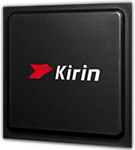
HiSilicon Kirin 9000 Benchmark, Test and specs
Last updated:
The HiSilicon Kirin 9000 has 8 cores with 8 threads and is based on the 9. gen of the HiSilicon Kirin series. The processor was released in Q4/2020. The HiSilicon Kirin 9000 scores 1,063 points in the Geekbench 5 single-core benchmark. In the Geekbench 5 multi-core benchmark, the result is 3,767 points.
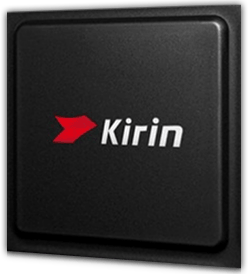
| Name: | HiSilicon Kirin 9000 |
|---|---|
| Family: | HiSilicon Kirin (29) |
| CPU group: | HiSilicon Kirin 9000 (2) |
| Architecture: | Cortex-A77 / Cortex-A55 |
| Segment: | Mobile |
| Generation: | 9 |
| Predecessor: | -- |
| Successor: | -- |
CPU Cores and Base Frequency
The HiSilicon Kirin 9000 has 8 CPU cores and can calculate 8 threads in parallel. The clock frequency of the HiSilicon Kirin 9000 is 3.13 GHz. The number of CPU cores greatly affects the speed of the processor and is an important performance indicator.
| CPU Cores / Threads: | 8 / 8 |
|---|---|
| Core architecture: | hybrid (Prime / big.LITTLE) |
| A-Core: | 1x Cortex-A77 |
| B-Core: | 3x Cortex-A77 |
| C-Core: | 4x Cortex-A55 |
| Hyperthreading / SMT: | No |
|---|---|
| Overclocking: | No |
| A-Core Frequency: | 3.13 GHz |
| B-Core Frequency: | 2.54 GHz |
| C-Core Frequency: | 2.05 GHz |
Internal Graphics
The HiSilicon Kirin 9000 has integrated graphics, called iGPU for short. Specifically, the HiSilicon Kirin 9000 uses the ARM Mali-G78 MP24, which has 384 texture shaders and 24 execution units. The iGPU uses the system's main memory as graphics memory and sits on the processor's die.
| GPU name: | ARM Mali-G78 MP24 |
|---|---|
| GPU frequency: | 0.76 GHz |
| GPU (Turbo): | No turbo |
| Compute units: | 24 |
| Shader: | 384 |
| Hardware Raytracing: | No |
| Release date: | Q4/2020 |
| Max. displays: | 1 |
|---|---|
| Generation: | Vallhall 2 |
| Direct X: | 12 |
| Technology: | 5 nm |
| Max. GPU Memory: | -- |
| Frame Generation: | No |
Hardware codec support
A photo or video codec that is accelerated in hardware can greatly accelerate the working speed of a processor and extend the battery life of notebooks or smartphones when playing videos.
| h265 / HEVC (8 bit): | Decode / Encode |
|---|---|
| h265 / HEVC (10 bit): | Decode / Encode |
| h264: | Decode / Encode |
| VP8: | Decode / Encode |
| VP9: | Decode / Encode |
| AV1: | Decode |
|---|---|
| AVC: | Decode / Encode |
| VC-1: | Decode / Encode |
| JPEG: | Decode / Encode |
Memory & PCIeThe processor can use up to memory in 4 (Quad Channel) memory channels. The maximum memory bandwidth is --. The memory type as well as the amount of memory can greatly affect the speed of the system. |
|
| Memory type: | Memory bandwidth: |
|---|---|
| LPDDR5-2750 LPDDR4X-2133 | -- -- |
| Max. Memory: | |
| Memory channels: | 4 (Quad Channel) |
| ECC: | No |
| PCIe: | |
| PCIe Bandwidth: | -- |
Thermal ManagementThe thermal design power (TDP for short) of the processor is . The TDP specifies the necessary cooling solution that is required to cool the processor sufficiently. The TDP usually gives a rough idea of the actual power consumption of the CPU. |
|
|---|---|
| TDP (PL1 / PBP): | |
| TDP (PL2): | -- |
| TDP up: | -- |
| TDP down: | -- |
| Tjunction max.: | -- |
Technical details
The HiSilicon Kirin 9000 is made in 5 nm. The smaller the manufacturing process of a CPU, the more modern and energy-efficient it is. Overall, the processor has 0.00 MB cache. A large cache can greatly speed up the processor's speed in some cases such as games.
| Technology: | 5 nm |
|---|---|
| Chip design: | Chiplet |
| Socket: | -- |
| L2-Cache: | -- |
| L3-Cache: | -- |
| AES-NI: | No |
| Operating systems: | Android |
| Virtualization: | None |
|---|---|
| Instruction set (ISA): | Armv8-A (64 bit) |
| ISA extensions: | -- |
| Release date: | Q4/2020 |
| Release price: | -- |
| Part Number: | -- |
| Documents: | -- |
Rate this processor
Benchmark results

The benchmark results for the HiSilicon Kirin 9000 have been carefully checked by us. We only publish benchmark results that have been created by us or that have been submitted by a visitor and then checked by a team member. All results are based on and fullfill our benchmark guidelines.
Geekbench 5, 64bit (Single-Core)
Geekbench 5 is a cross plattform benchmark that heavily uses the systems memory. A fast memory will push the result a lot. The single-core test only uses one CPU core, the amount of cores or hyperthreading ability doesn't count.

|
Intel Core i3-7320
2C 4T @ 4.10 GHz |
||

|
AMD EPYC 7262
8C 16T @ 3.40 GHz |
||
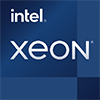
|
Intel Xeon W-2223
4C 8T @ 3.90 GHz |
||
|
|
HiSilicon Kirin 9000
8C 8T @ 3.13 GHz |
||
|
|
HiSilicon Kirin 9000E
8C 8T @ 3.13 GHz |
||
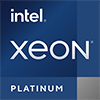
|
Intel Xeon Platinum 8180M
28C 56T @ 3.80 GHz |
||

|
Intel Core i5-10500E
6C 12T @ 4.20 GHz |
||
Geekbench 5, 64bit (Multi-Core)
Geekbench 5 is a cross plattform benchmark that heavily uses the systems memory. A fast memory will push the result a lot. The multi-core test involves all CPU cores and taks a big advantage of hyperthreading.

|
Intel Core i5-8350U
4C 8T @ 2.40 GHz |
||

|
Intel Core i5-8257U
4C 8T @ 3.20 GHz |
||
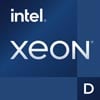
|
Intel Xeon D-1528
6C 12T @ 1.90 GHz |
||
|
|
HiSilicon Kirin 9000
8C 8T @ 3.13 GHz |
||
|
|
HiSilicon Kirin 9000E
8C 8T @ 3.13 GHz |
||
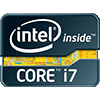
|
Intel Core i7-990X
6C 12T @ 3.46 GHz |
||

|
MediaTek Dimensity 8100
8C 8T @ 2.85 GHz |
||
iGPU - FP32 Performance (Single-precision GFLOPS)
The theoretical computing performance of the internal graphics unit of the processor with simple accuracy (32 bit) in GFLOPS. GFLOPS indicates how many billion floating point operations the iGPU can perform per second.

|
Intel Core i5-8305G
AMD Radeon RX Vega M GL @ 1.01 GHz |
||

|
Intel Core i7-8705G
AMD Radeon RX Vega M GL @ 1.01 GHz |
||

|
MediaTek Dimensity 9300
ARM Immortalis-G720 MC12 @ 1.00 GHz |
||
|
|
HiSilicon Kirin 9000
ARM Mali-G78 MP24 @ 0.76 GHz |
||

|
Apple M1 (7-GPU)
Apple M1 (7 Core) @ 1.30 GHz |
||

|
Qualcomm Snapdragon 8 Gen 3
Qualcomm Adreno 750 @ 0.90 GHz |
||

|
Intel Core i7-1360P
Intel Iris Xe Graphics 96 (Alder Lake) @ 1.50 GHz |
||
AnTuTu 8 Benchmark
The AnTuTu 8 Benchmark measures the performance of a SoC. AnTuTu benchmarks the CPU, GPU, Memory as well as the UX (User Experience) by simulating browser and app usage. AnTuTu can benchmark any ARM CPU that runs under Android or iOS. Devices may not be directly compareable if the benchmark has been performed under different operating systems.
In the AnTuTu 8 benchmark, the single-core performance of a processor is only slightly weighted. The evaluation consists of the multi-core performance of the processor, the speed of the RAM and the performance of the internal graphics.
In the AnTuTu 8 benchmark, the single-core performance of a processor is only slightly weighted. The evaluation consists of the multi-core performance of the processor, the speed of the RAM and the performance of the internal graphics.

|
Apple A12X Bionic
8C 8T @ 2.49 GHz |
||

|
Qualcomm Snapdragon 888+
8C 8T @ 3.00 GHz |
||
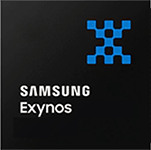
|
Samsung Exynos 1080
8C 8T @ 2.80 GHz |
||
|
|
HiSilicon Kirin 9000
8C 8T @ 3.13 GHz |
||

|
Qualcomm Snapdragon 870
8C 8T @ 3.20 GHz |
||

|
MediaTek Dimensity 1300
8C 8T @ 3.00 GHz |
||

|
MediaTek Dimensity 1100
8C 8T @ 2.60 GHz |
||
Benchmarks

Geekbench 5 (SC)
2,479 entries
2,479 entries

Geekbench 5 (MC)
2,452 entries
2,452 entries

FP32 SP (iGPU)
2,010 entries
2,010 entries

AnTuTu 8 Benchmark
118 entries
118 entries
Popular comparisons
back to index



